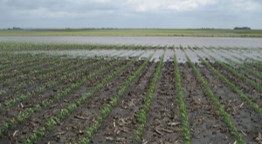Bremner, J.M. and K. Shaw, 1958. Denitrification in soil. II. factors affecting denitrification. Journal of Agricultural Science (Cambridge) 51:40.
Lee, C., J. Herbek, G. Schwab, and L. Murdock. 2007. Evaluating flood damage in corn. University of Kentucky Cooperative Extension Service Publication AGR-193. http://www.ca.uky.edu/agc/pubs/agr/agr193/agr193.pdf
Author: Mark Jeschke
The foregoing is provided for informational use only. Please contact your Pioneer sales professional for information and suggestions specific to your operation. Product performance is variable and depends on many factors such as moisture and heat stress, soil type, management practices and environmental stress as well as disease and pest pressures. Individual results may vary.
Vol. 12 No. 6 April 2020












